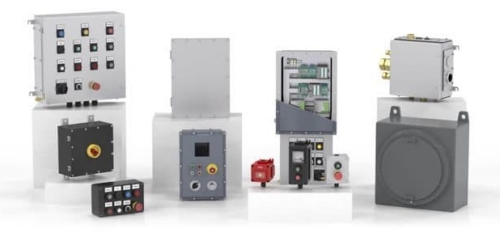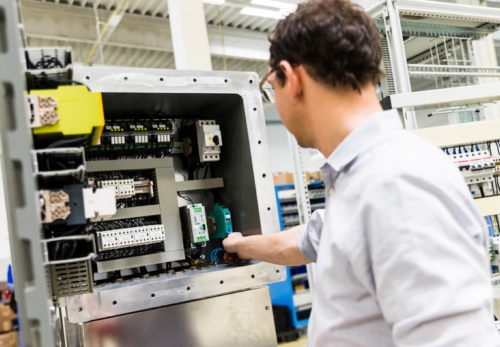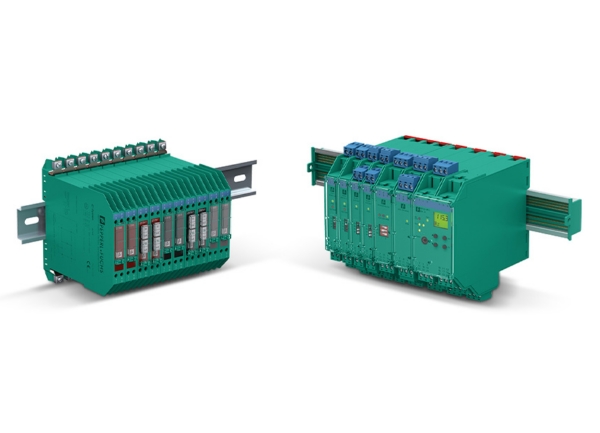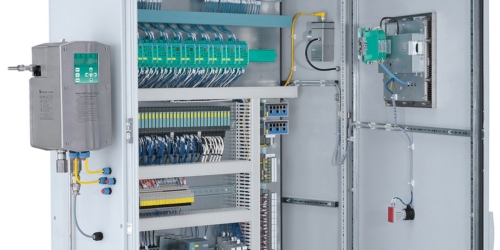Pepperl+Fuchs Explosion Protection Equipment
21.06.2023
An explosive zone is a room or a limited place indoors or outdoors where explosive elements are contained or may be formed. Explosion-proof equipment should be used in these areas to ensure security.
Explosion-proof equipment - industrial electrical equipment that provides in a constructive way the elimination or prevention of ignition of the stressed environment around it due to the operation of this electrical equipment. Today we will analyze Pepperl+Fuchs explosion protection equipment in detail.
Types of Explosion Protection
Types of explosion protection of different levels differ from each other by means and measures for ensuring explosion safety, specified in the standards for the corresponding types of explosion protection.
For the equipment of security systems, the use of 3 types of explosion protection is mainly characteristic:
- "i" - intrinsically safe electrical circuit;
- "d" - flameproof enclosure;
- "m" - sealing compound.
Explosion or fire prevention
The type of explosion protection technology "intrinsically safe electrical circuit" ("i") is based on the method of preventing an explosion or ignition by limiting electrical and thermal energy. In equipment made with this type of explosion protection, the current in circuits and electrical circuits of devices is limited to very small values.
Accordingly, the energy of the spark is not enough to undermine the explosive mixture. "Intrinsically safe electrical circuit" is the most reliable type of explosion protection, however, its application in specific types of devices is not always technically possible.
Explosion containment
The type of protection "flameproof enclosure" ("d") is based on the explosion containment method. The main principle is to prevent the energy of the explosion from spreading beyond the shell of the device.
When using this type of explosion protection, the parameters of the device are no longer limited by current, thermal energy, capacitance, and inductance of electronic components. But more stringent requirements are imposed on the design and mechanical strength of the instrument housing, as well as on installation.
Isolation from an explosive atmosphere
The type of protection "sealing with compound" ("m") is based on the principle of physical separation of explosive parts and instrument components from the explosive atmosphere. This is achieved by pouring electrical circuits and electronic components of equipment with special epoxy resins (compounds).
Pepperl+Fuchs Explosion Protection Products
Remote I/O systems LB, FB from Pepperl+Fuchs use a combination of different explosion protection methods such as "intrinsically safe Ex i electrical circuit" for I/O channels, "increased reliability Ex e", "flameproof enclosure Ex d" and others to provide their own explosion protection and connection of devices requiring high power. At the same time, these systems ensure that "hot" service is possible even for FB modules with Ex d type of protection, which can be removed and installed in hazardous area 1 without special restrictions on this type of work.

Pepperl+Fuchs offers a wide range of electronic explosion protection equipment.
- Terminal and Junction Boxes.
- Control Stations.
- Control Units.
- Control and Distribution Panels.
- Switch Disconnectors and Safety Switches.
- Enclosures.
- Purge and Pressurization Systems.
- Cable Glands and Accessories.
- Signaling Devices.
- Plugs and Sockets.
Industries That Require Explosion Protection
Let's find out in which areas an explosion protection system is needed.
Aerosols and vapors
The main explosion hazard in the aerosol industry is the charging and disposal areas, where containers are filled with aerosols or aerosols are disposed of.

Chemicals
The chemical industry converts a wide range of raw materials that are either highly flammable or have low flammability resistance.
Energy and power
Explosion protection in the electric power industry is usually focused on ethanol, coal, and biofuel plants where the components are flammable.
Food and grain
The food and grain industries produce large quantities of combustible specks of dust such as starches and sugars, in the form of fine particles presenting a constant explosion hazard.
Plastics
There is a potential dust explosion hazard when producing resins from base raw materials.
Pharmaceuticals
The production of pharmaceuticals (tablets, powders, coatings) involves potentially explosive atmospheres.
Wood and paper
The woodworking and paper industry includes a wide range of explosive industries. The resulting residual dust often causes secondary explosions throughout the installation.
Benefits of Pepperl+Fuchs Explosion Protection
Now let's find out the key benefits of Pepperl+Fuchs explosion protection.
Safe working environment
By definition, hazardous locations are those that pose a high risk. When it comes to the safety of your employees, you should never cut corners. A safe working environment not only reduces the risk of loss of human life. It also ensures that you don't pay heavy security check fines or even large losses.
Finally, you will get lower employee turnover. Nobody wants to work in a place that puts their lives in danger. Therefore, when your employees realize the danger, they will look for another job.
Lower installation costs
Compared to explosion-proof enclosures, explosion-proof equipment is much lighter and less bulky. Flameproof enclosures weigh more and take up more space due to intrinsic safety. This means installation costs will be lower and you will be able to use standard instrument cables.
Moreover, conduits, seals, and housings in explosion-proof wiring are usually quite expensive. Your costs can also be reduced in the long run with intrinsic safety. The blast-proof enclosure only limits the area in which the explosion occurs. It contains an explosion. On the other hand, intrinsically safe devices eliminate the possibility of an explosion.
No workflow interruption
When you rely on explosion-proof enclosures, maintenance, and troubleshooting can become an ordeal. Since this method does not actually prevent explosions, it is necessary to stop production and ventilate the room during maintenance and diagnostics. Flameproof enclosures also require more frequent maintenance checks for leaks and damage as they are more prone to both.
When it comes to explosion-proof devices, you can carry out maintenance and diagnostics without interfering with the workflow. Since explosion-proof devices operate at low power and do not allow explosions, you do not need to ventilate the room or remove workers from the room when conducting regular inspections.
More flexible settings
Because you don't have to deal with cumbersome wiring and there's little chance of an explosion, your security settings are easier to adjust. We all know that there are rarely work areas that look the same as in the “book”. The ability to tailor your security practices to every corner can dramatically reduce costs, increase security, and ensure a more secure investment.